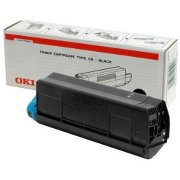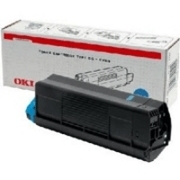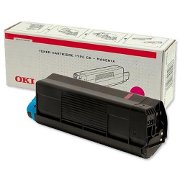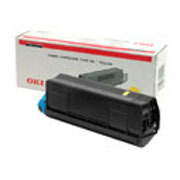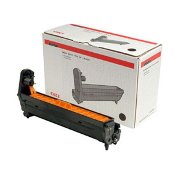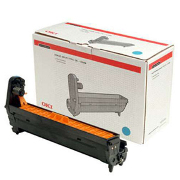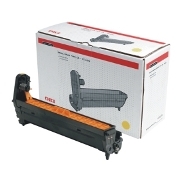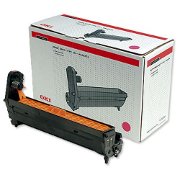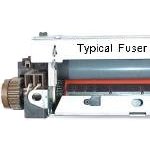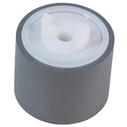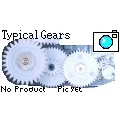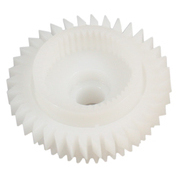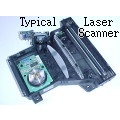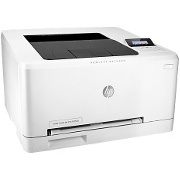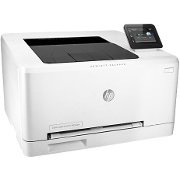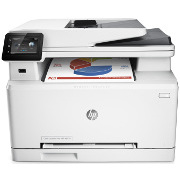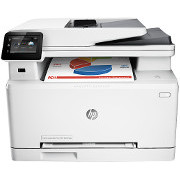Original Toners
Original Drums
Spares
OKI C5100n

A4 colour LED electrophotography printers with colour print speeds of 12 pages per minute for colour and 20ppm for mono print.
These printers were introduced in 2002/3 competing with machines like the Color LaserJet 4600. Many of this generation of machines were an advance on their predecessors, which had used a carousel mechanism to build up the colour images - at the cost that they ran rather slowly.
Fast colour and mono on one affordable printer.
The C5000 Series enables individuals in business and small workgroups to print in colour and mono without waiting and without paying extra for the privilege. With these professional office printers you can print stationery, proposals, short-run mailers and even 1.2m long banners and booklets. The C5100n Colour Laser Printer is a host-based Windows printer, using the PC to process documents before sending them to the printer. Even so, with built in networking more than one user can share the C5100n.
These machines are quite reminscent of the HP LJ-4600; very different construction, similar principles. The print media (eg paper) is placed on a transfer belt which carries it under a succession of toner - developer - drum units. As each produces an image in it's own colour transfer rollers under the belt pull the toner on the drums off onto the media. Finally it passes through a fuser which fixes the powder to the page by heat and pressure.
Oki stopped making these in Summer 2004. However it was the first of a fairly long-lasting line. They shrank the specification to produce the C3100 and C3200 and they developed higher speed versions with bigger cartridges and conventional print language support for PCL and PostScript with machines like the C5650 and C5950 which were still on the market in 2010.
There is a problem with these printers. The Windows host based printing system
was for XP, and recent versions of Windows 7, 9 and 10 don't support them. So although the engine is quite good and could be kept going they won't work with Windows 64 bit signed drivers. There may be mileage in these old things yet; we think they will work with Linux.
The Oki C5300 can have a future because it has a faster processor and more RAM to support the PostScript 3 and PCL 5c languages. It therefore doesn't entirely matter if there is Windows driver for it because it should work as a generic PCL or PostScript machine. (We havent tried it, but the HP Color LaserJet driver should work and the Color LaserJet 4600 driver might)
A potential merit for these old printers is that they do have largish 5,000 page cartridges.

Main Features of the OKI C5100n Colour Laser Printer
- 12 pages per minute (ppm) Colour
- 20 ppm mono print speed
- 32MB RAM
- Optional second paper tray accessory increases paper capacity to 930 sheets
- Paper weights up to 203gsm
- 300 sheet paper tray
- 100 sheet multipurpose/manual feed tray
- Optional duplex unit for double-sided printing
- Built-in networking allows the printer to be shared by multiple users
- Banner and sign printing up 1.2m
OKI are very proud of their LED printheads which are used on almost all their electrophotographic printers.
OKI are pretty unusual in using this technology. It removes a mechanical stage from the laser-print process and does seem to be more reliable - it is one of Oki's unique selling points.
Electrophotography is the science of using light to control fields of static electricity and the distribution of toner particles. There is a long and complex history with the key features being Chester Carlson's sequence of patents and the launch of the "Xerox 914" copier in 1959. The copier - and perhaps the fax - are amongst the things making modern office paper-work possible.
Xerox have been an inventive company. They modified the "914", adding a CRT to make the "LDX" fax machine in 1964 - the first modern fax. Later they modified a faster copier to become the first laser printer in 1970. Perhaps most importantly Xerox "Alto" computers developed the idea that a computer could display a document as an interactive graphic on a screen. Xerox failed to commercialise this idea but its picked up by Steve Jobs of Apple (Xerox got stock options) and then by Bill Gates at Microsoft.
Xerox lost momentum in the 1970s, a court judgement forced them to share their copier patents and they sold the bulk of the computer assets they had been building. Japanese companies like Canon, Ricoh and Minolta took the leadership in copiers and then laser printers.
A huge new market for laser printers developed as the new graphical Windows and Mac office computers replaced typewriters. The bulk of that market passed to HP, basing their machines on Canon engines.
OKI
OKI are quite an old company, their heritage dates back to 1881 when Kibataro Oki developed an Edison type telephone using carbon powder. Lacquer-coated wire is another invention credited to Oki.
During the 1960s OKI developed computers and banking machinery - they remain a major maker of ATMs today. Unlike Canon and Konica-Minolta they didn't have a background in cameras and copiers so they missed out on the first wave of laser printer development.
OKI were in the forefront as developers of a more convenient fax machine using thermal technology and seem to have preferred that as a potential computer printing technology. where Oki succeeded well with its thermal fax, Okimate colour printers were liked but proved too slow and expensive for office use. HP had a line of thermal printers at one time. Apple had the Silentype (Silentwriter), and IBM the Quietwriter - so OKI weren't out on a limb, it just wasn't technology that would come good.
OKI have a claim to have invented the dot matrix printer with the OKI Wiredot in 1968. Certainly OKI's Microline 80 printers were built like tanks. Dot matrix technology was very popular into the 1990s but it's lack of the resolution to produce a good graphic and inconvenient ribbon lift mechanism for colour meant the market would be limited.
OKI seem to have taken a dislike to inkjet technology (many engineers would agree) and they didn't want to imitate other companies laser mechanisms - so they developed their own LED printheads.
OKI printers are therefore electrophotographic - but not laser printers.
There is a bit more on the C5600 page.
Duty Cycle:
50,000 pages/month
Print Speed:
Upto 20ppm Black
Upto 12ppm Colour
Print Resolution:
1200 x 600 dpi
Paper Handling:
Internal tray capacity (tray 1) & paper weight: 300 sheets, 75-120gsmm
Optional 2nd tray: 530 sheets, 75-176gsm
Paper size (any tray): A4, A5, B5, A6 (tray 1 only), Legal13, Legal13.5, Legal14, Letter, Executive
Multi-purpose tray: Max capacity 100 sheets of 80gsm paper. Paper sizes: A4, A5, B5, A6, C5, DL, Com-9, Com-10, Monarch, Custom size (up to 1200mm length), Legal13, Legal13.5, Legal14, Letter, Executive
Multi-purpose paper weight: 75 & 203gsm
Duplex Paper Weight: 75 & 105gsm
Paper output: 250 sheets face down, 100 sheets face up
Although computing has an aura on newness about it you can't get away from standards, which are often rooted in a deep and dark history. That is true of print languages. The basic problem with the C5100 is that it was meant to go with Windows XP and it's predecessors - and it isn't being updated for Windows 7, 9 and 10.
What the phrase Windows host based printing system
means is that the computer and specifically the print driver makes up the page image for the printer using the computer's internal programming API (with MS-Windows this is called the GDI). The page is then transferred from computer to printer memory as a compressed bitmap using a rudimentary OKI proprietary language called Hiper-C. This is actually an economical way to do things since the printer doesn't need a powerful page-formatting processor of it's own - although being a colour electrophotographic machine (mustn't say laser printer) it does still need a processor and quite a lot of memory.
You can see this with the C5100; it makes do with a 200MHz processor and 32MB memory. It's sister C5300 with its fancy PCL and Postscriptprint languages needs a 400MHz processor and 64MB or even 128MB for the duplex model. That wasn't far short of what users typically had on their PCs at the time. So the C5100 saved a bit of money.
The problem has come as Microsoft moved on from XP. The bulk of the old operating system had originally been written before the Internet and the Web became common place and XP's network stack and applications like IE were riddled with security loopholes. One problem is that printer users often think a new print driver will solve error messages - and in fact they download malware. Hence that need for better security.
So Microsoft has introduced 64 bit digitally signed drivers - but the poor old C5100 is now a bit of an orphan. OKI don't want to rewrite the driver - that would be an odd exercise for a printer they built years ago. Microsoft don't want to rewrite the driver - it isn't theirs and the Hiper-C bitmap transfer language it uses was Oki-proprietary anyway.
The C5100 should work under Linux using foo2hiperc
- providing someone out there maintains it (or doesn't break it). The C5300 with PostScript and PCL will still work even if no-one does provide specific drivers; it should work as Generic PostScript or perhaps as Color LaserJet.
There is just a chance that the C5100 might work with the C5650 driver for Windows 7. Oki don't say so- they wouldn't. They might prefer you to buy a new OKI printer.
Processor:
200MHz
Memory:
32MB
Print Languages:
Windows host based printing system
Power:
Single phase 220 & 240 VAC, frequency 50Hz +/-2Hz
Power:
Typical 400W, Peak 750W, Idle 80W (average), Power save 18W
Dimensions:
342 x 400 x 528 mm
Weight:
20kg approx (without consumables)
Acoustic Noise:
Operating: 54dBA,
Standby: 40dBA,
Power save: background level
Consumables:
42127408 - Black Toner Cartridge cartridge capable of printing up to 5000 A4 pages at 5% density
42127407 - Cyan Toner Cartridge capable of printing up to 5000 A4 pages at 5% density
42127406 - Magenta Toner Cartridge capable of printing up to 5000 A4 pages at 5% density
42127405 - Yellow Toner Cartridge capable of printing up to 5000 A4 pages at 5% density
Fuser Unit:
42625603 Fuser Unit - Up to 45,000 pages of A4. No fuser oil is required
Warranty:
Warranty was originally Pan European 1 year on-site
. Obviously there weren't any 13 year warranty options so there won't be any machines still covered. There may be parts because the engine was used for quite a long time.
Replacement Printers
OKI's intended replacements for the C5000 series are the C300 / C500 series with the C500 being intended for higher use.
If you prefer something a bit more mainstream you could look at the HP LaserJet Pro M252 (printer) and LaserJet Pro M277 (MFP).
|
|
|
|
Copyright G & J Huskinson & MindMachine Associates Ltd 2013, 2015. Some pictures derived from Oki User and Service guides. These technical pages do not constitute an offer for sale; just our knowledge at the time of writing. See the catalog. Sales pages on this Web site use cookies to store user information. We also use Google Analytics to track site usage patterns.

